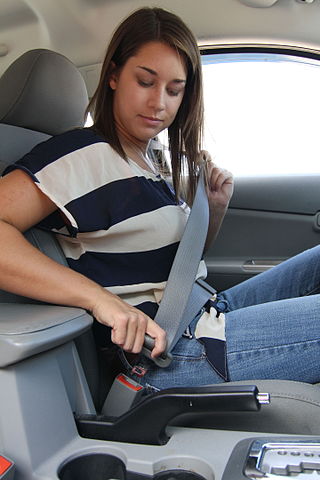
A seat belt, also known as a safety belt or spelled seatbelt, is a vehicle safety device designed to secure the driver or a passenger of a vehicle against harmful movement that may result during a collision or a sudden stop. A seat belt reduces the likelihood of death or serious injury in a traffic collision by reducing the force of secondary impacts with interior strike hazards, by keeping occupants positioned correctly for maximum effectiveness of the airbag, and by preventing occupants being ejected from the vehicle in a crash or if the vehicle rolls over.
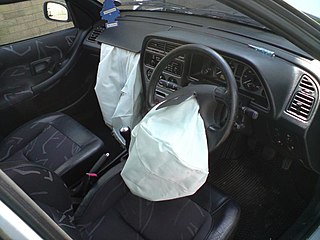
An airbag is a vehicle occupant-restraint system using a bag designed to inflate exceptionally quickly and then deflate during a collision. It consists of an airbag cushion, a flexible fabric bag, an inflation module, and an impact sensor. The purpose of the airbag is to provide a vehicle occupant with soft cushioning and restraint during a collision. It can reduce injuries between the flailing occupant and the vehicle's interior.

Crumple zones, crush zones, or crash zones are a structural safety feature used in vehicles, mainly in automobiles, to increase the time over which a change in velocity occurs from the impact during a collision by a controlled deformation; in recent years, it is also incorporated into trains and railcars.

Automotive safety is the study and practice of automotive design, construction, equipment and regulation to minimize the occurrence and consequences of traffic collisions involving motor vehicles. Road traffic safety more broadly includes roadway design.
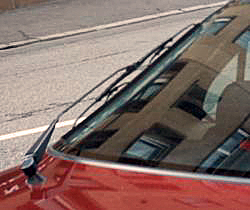
A windscreen wiper or windshield wiper is a device used to remove rain, snow, ice, washer fluid, water, or debris from a vehicle's front window. Almost all motor vehicles, including cars, trucks, buses, train locomotives, and watercraft with a cabin—and some aircraft—are equipped with one or more such wipers, which are usually a legal requirement.

The Chevrolet Lumina is a mid-size car that was produced and marketed by the Chevrolet division of General Motors from 1989 until 2001.
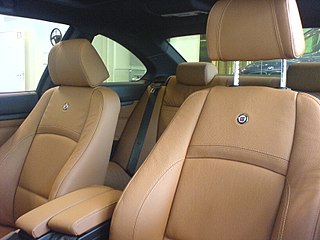
A car seat is the seat used in automobiles. Most car seats are made from inexpensive but durable material in order to withstand prolonged use. The most common material is polyester.

The Lexus LS is a full-size luxury sedan serving as the flagship model of Lexus, the luxury division of Toyota. For the first four generations, all LS models featured V8 engines and were predominantly rear-wheel-drive. In the fourth generation, Lexus offered all-wheel-drive, hybrid, and long-wheelbase variants. The fifth generation changed to using a V6 engine with no V8 option, and only one length was offered.

The Insurance Institute for Highway Safety and Highway Loss Data Institute (IIHS-HLDI) is an American nonprofit organization. It was established in 1959, and it is noted for its safety reviews of vehicles in various simulated traffic situations, including the effectiveness of a vehicle's structural integrity and safety systems during a collision, in addition to examining improvement on such elements.

The Nissan Quest is a minivan manufactured and marketed by Nissan for model years 1993–2017 over four generations.

Béla Barényi was an ethnic Hungarian engineer from Austria-Hungary, who was a prolific inventor, sometimes even compared to Thomas Edison. Barényi made numerous crash protection inventions, and is therefore regarded as the father of passive safety in automotive design.
Hugh DeHaven was an American pilot, engineer and passive safety pioneer. DeHaven survived a plane crash while training as a Royal Canadian Flying Corps pilot during the First World War, and became interested in improving human survivability in vehicle crashes. He has been called "Father of Crash Survivability".
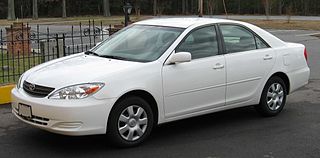
The Toyota Camry (XV30) is a mid-size car produced by Toyota from June 2001 to January 2006. The XV30 series represented the fifth generation of the Toyota Camry in all markets outside Japan, which followed a different generational lineage. The XV30 range is split into different model codes indicative of the engine. Four-cylinder models utilize the ACV30 and ACV35 codes, with MCV30 (3.0-liter) and MCV31 (3.3-liter) designating the six-cylinder versions.
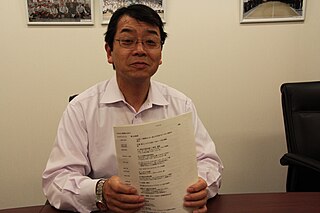
Haruhiko Tanahashi is a Japanese automotive engineer who is responsible for the design and construction of the Lexus LFA supercar. Tanahashi joined Toyota Motor Corporation in 1978 as a chassis engineer, and has since worked in new vehicle design for over 30 years. The LFA development program, begun as project 680, comprised over a decade of his career until the debut of the vehicle in 2009. Tanahashi holds eight automotive design patents, previously worked on earlier models including the Toyota Crown, Soarer and Aristo, and has been part of various Toyota and Lexus development divisions.

Takata Corporation was a Japanese automotive parts company. The company had production facilities on four continents, with its European headquarters located in Germany. In 2013, a series of deaths and injuries associated with defective Takata airbag inflators made in their Mexico plant led Takata to initially recall 3.6 million cars equipped with such airbags. Further fatalities caused by the airbags have led the National Highway Traffic Safety Administration (NHTSA) to order an ongoing, US-wide recall of more than 42 million cars, the largest automotive recall in U.S. history. In June 2017, Takata filed for bankruptcy. It was acquired by Key Safety Systems.
Dean L. Sicking is an American inventor and safety researcher.
Clarence Mintzer Ditlow III was an American consumer advocate, primarily focusing on automotive safety. He was closely associated with Ralph Nader's organizations, and has been given credit for helping to instigate several critical safety changes within the auto industry.
Joyson Safety Systems (JSS), founded as Breed Corporation and later called Breed Automotive Corporation (BAC), Breed Technologies, Inc. (BTI), and Key Safety Systems (KSS), is an American company which develops and manufactures automotive safety systems. The company is a result of KSS purchasing troubled Japanese airbag company Takata Corporation. It is owned jointly by Joyson Group and PAG. The company headquarters is in Auburn Hills, Michigan, United States. Globally, the company has 50,000 employees across 32 plants and technical centers worldwide. The current executive director and president of JSS is Tao Liu.

An Automotive textile is a technical textile used in the transportation and automotive industries. The choice of type of automotive textile focuses on aspects of safety, comfort, and aesthetics. These textiles have variety of applications in the automotive industry, such as interior fittings, safety features, sound insulation, and tire reinforcement.













